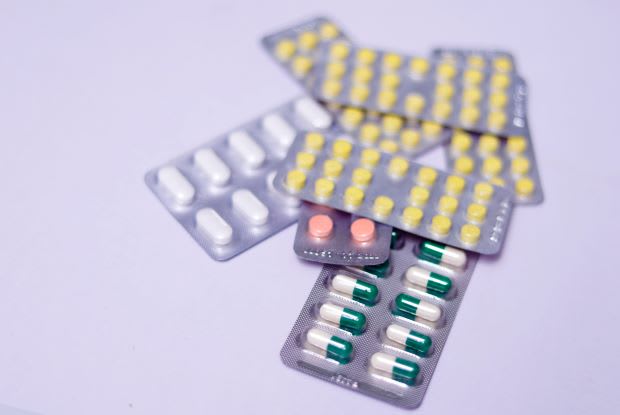Table of Contents
I. Types of Menopausal Medications
II. Pros and Cons of Estrogen Pills
III. Comparing Estrogen Skin Patches
IV. Topical Estrogen Treatment
VI. Which Type of Estrogen Therapy is Right for You?
Types of Menopausal Medications
When a woman approaches menopause (the end of menstrual cycles), symptoms of hot flashes, vaginal dryness, and changes in sleep patterns may occur. Estrogen is the main hormone associated with female characteristics in the body. During menopause, a woman’s estrogen levels are lowered, increasing the risk of conditions like osteoporosis.
To relieve symptoms of menopause and reduce the risk of osteoporosis (weakened bones), women in menopause are often prescribed hormone replacement therapy to increase their estrogen levels. Hormone therapy is not for you if you have a bleeding disorder, allergic reaction to hormone medicine, or a history of cancer, blood clot, stroke, or heart attack. If you do qualify for this treatment, medications like Climara and EstroGel are effective at treating symptoms of menopause. Read on to learn more about the different types of hormone therapies. [1]
Pros and Cons of Estrogen Pills
There are many methods used to boost levels of estrogen in the body. Estrogen replacement therapy (ERT) can come in the form of pills, skin patches, and vaginal suppositories. Talk to your doctor about your symptoms, treatment goals, and personal preferences so you can make an informed decision together.
Pills are the most common form of ERT, and you will likely hear your doctor mention Premarin or Estrace when discussing oral pills. The benefit of estrogen pills is that they are extensively studied. There are many other ways of doing ERT, but oral estrogen medications are one of the most effective ways to treat menopause symptoms. Estrogen therapy has its risks. Taking estrogen can increase the risk of strokes, blood clots, and breast cancer. Side effects of oral estrogen may include swollen breasts, headache, nausea, vaginal discharge, and liver damage. [1] Estrogen skin patches, like Estraderm, are typically worn on the lower stomach, beneath the waistline. Patches are generally changed once or twice a week, depending on your doctor’s directions. In addition to offering the same benefits as estrogen pills, skin patches are more convenient because you can stick them and leave them on. Skin patches also do not increase the risk of blood clots the way oral estrogen does. Patches are better for women with liver problems because the estrogen from a patch bypasses the liver and enters the bloodstream directly. Estrogen skin patches have similar drawbacks to estrogen pills. In addition to side effects like vaginal discharge and swollen breasts, skin patches are likely to irritate the area of skin where it is applied. There is also the danger of heat making the patch release estrogen too quickly, so avoid direct sunlight and saunas while using an estrogen patch. [1] Like estrogen skin patches, topical ERT is absorbed directly into the bloodstream, so it is safer than oral estrogen for women with liver or cholesterol conditions. However, estrogen gels, creams, and sprays are generally applied once a day, so they may not be as convenient as skin patches. Topical estrogen treatment can be applied to the legs, arm, or wrists, depending on the particular medication. Unlike oral estrogen, topical estrogen has not been extensively studied. A possible drawback to topical estrogen is that the cream, spray, or gel may be rubbed off before the hormone is fully absorbed. [2] Finally, estrogen therapy can come in the form of vaginal suppositories, rings, or creams. This type of treatment is applied directly to the vaginal area and is typically used for treating vaginal dryness, itchiness, or pain during intercourse. Vaginal suppositories may be more convenient than pills because vaginal rings are replaced once every three months. Still, you should follow your doctor’s dosage instructions and they will determine the right treatment for you. Studies show that vaginal suppositories are more effective than other forms of ERT for treating vaginal symptoms of menopause. This type of treatment can also release estrogen in low doses so that only the immediate area is treated. This way, there is relief for the localized symptoms while the rest of the body is not exposed to estrogen. This may reduce the risk of side effects of estrogen therapy, making suppositories a safer method of ERT. [3] It is important to work closely with your healthcare provider to determine the best type of estrogen therapy for you. The oral ERT route is the most studied and has been around the longest. Other methods, such as skin patches and topical creams, may have theoretical advantages that are yet to be proven with time and research. Discuss your treatment goals with your doctor. Generally, experts recommend getting the lowest dose for the shortest treatment period possible to limit your risks. [1] If you are prescribed EstroGel, Climara skin patches, Premarin cream, or Estrace (estradiol), visit Canadian Pharmacy Service to fill your prescription at a discounted price today. The content in this article is intended for informational purposes only. This website does not provide medical advice. In all circumstances, you should always seek the advice of your physician and/or other qualified health professionals(s) for drug, medical condition, or treatment advice. The content provided on this website is not a substitute for professional medical advice, diagnosis, or treatment.
Comparing Estrogen Skin Patches

Topical Estrogen Treatment
Vaginal Suppositories

Which Type of Estrogen Therapy is Right for You?
